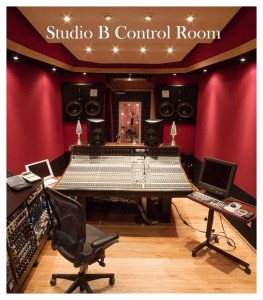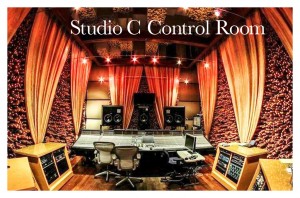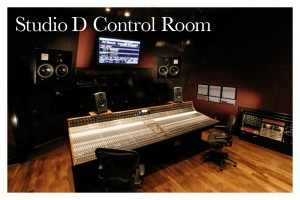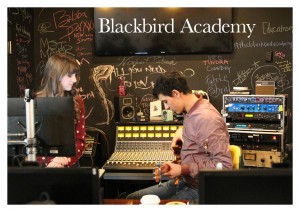By going big and bold from the very start, John McBride has made Blackbird Studio in Nashville one of the great modern success stories of the recording industry. Equal parts starry-eyed idealist and steely-eyed realist, McBride runs Blackbird so that the artists, engineers, and producers who choose to work there will meet no limits in their creative expression. As a result, Blackbird’s client list is – to understate it – impressive: Bruce Springsteen, Tim McGraw, Miley Cyrus, Bon Jovi, Kenny Chesney, Lionel Richie, Sheryl Crow, Dolly Parton, Buddy Guy, Kid Rock, Mariah Carey, Yo-Yo Ma, and on and on and on, with zero reduction in star power. It’s worth noting that the list also includes McBride’s wife, country legend Martina McBride. From the moment the pair began operations in 2002, Blackbird has given its users the utterly transparent sound of ATC monitors.

“If I only had one day to live, I’d spend it in the studio tracking,” John McBride said. “You go in at the start of the day with nothing, and by the end of the day you’ve got a song, and that song could change the world. What could be better than that? The power of music is tremendous, and I love helping people make great music. The studio should inspire the artist to his or her creative peak, and I’ve worked hard to make Blackbird a place where absolutely nothing stands in the way of the artist’s very best work.”
Ironically, the idea for Blackbird Studio started with the notion of putting a vocal booth in the McBride’s garage. “It kind of ballooned from there,” laughed John, who has been – and continues to be – Martina’s FOH engineer since long before she released her first album (The Time Has Come, 1992). “I always felt that Martina’s vocals were never properly captured in the studio. Hence the vocal booth. But as it is, I’m an ‘all in’ or ‘none’ kind of guy; my motto is ‘either you rock or you suck.’ It means do it right, or don’t do it. Good is the enemy of great. Good doesn’t get anybody’s attention. Good will land you in a pit of mediocrity. If we had built a ‘good’ studio in 2002, we’d have been closed by 2005. Instead, we went all out and did it as well or better than anyone else. That’s why we get emails from people all over the world saying that they heard about the studio and that they need to work here.” Incidentally, the name of the studio honors McBride’s favorite band, who recorded ‘Blackbird’ in 1968 at Abbey Road Studios. Citing the life-changing impact of the Beatles on a boy growing up in Wichita, Kansas, McBride now owns over 15,000 pieces of Beatles-related vinyl!

McBride chose the equipment in Blackbird carefully. “I talked with a lot of people about what kinds of monitors they liked,” he said. “Everyone had good things to say about ATC and, importantly, no one had anything bad to say. When we were setting up, a couple of the guys from ATC flew over to help with the monitor installation. While they were here, they gave us a lot of great suggestions for control room design, especially for improving the low-end response. I really liked them, and that experience solidified my trust in ATC. Personally, I love monitoring on the 300s or 150s at every stage of the recording process; the entire frequency range is there, huge and beautiful. It’s a visceral, emotional experience for me and for the client, but it’s also extremely accurate and revealing. I always know that when I get something sounding right on the ATCs, it’s going to sound right everywhere else.” Of Blackbird’s seven big control rooms, six use ATC SCM300ASL or ATC SCM150ASL soffit-mounted loudspeakers either in stereo or surround-sound configurations. Moreover, Blackbird keeps a healthy stock of ATC SCM20ASL and ATC SCM50ASL nearfield monitors that clients can request in any room.

The early years at Blackbird were a heady time for McBride, as seemingly endless renovations to the former Creative Writing Studios merged with the scheduling demands of the studio’s first clients. The very first album completed at Blackbird Studio was John Hiatt’s Beneath This Gruff Exterior. “It was a crazy time,” recalled McBride. “Kings of Leon were here a few times; I remember them playing wallball a lot as I went past taking care of an endless to-do list. I also remember appreciating for the first time what an amazing collection of artists a multi-room studio like Blackbird could collect at one place and one time. We had Mariah Carey next to Big & Rich. We had Tim McGraw next to Megadeth. That kind of thing doesn’t happen outside of the Grammys. And I was dazzled by the magnitude of the talent that was coming through here, too. People like Bob Seeger, John Fogerty, Johnny Mathis, and Tony Bennett were booking time at Blackbird! Cliff Richard came through – he was the Elvis of England! On the other side of the glass, we had talent like Al Schmitt, Ed Cherney, and Bob Ludwig making music here. It’s astounding. Phil Ramone worked here a lot, and I always felt like I should have had a camera rolling when we talked – he was a living history of the music industry. I’m so thankful that so many of my heroes have come through Blackbird; that’s the payoff. I like to make them happy.”

Recently, McBride took the unusual step of fusing pro audio education into the marrow of Blackbird. “Outside of being a dad and a husband, Blackbird Academy is probably the most important thing I’ve done with my life,” he said. “The idea originated from a conversation Vance Powell and I had with a bunch of Blackbird interns (this place is overrun with interns!). Of course, they had all graduated from accredited programs: some from traditional universities and some from dedicated pro audio trade schools, but all bone fide. We were asking them practical questions like, ‘what’s your favorite channel strip?’ or ‘what’s your favorite kick drum mic?’ They didn’t have answers because they hadn’t been exposed to different consoles and only mic’d a drum kit a couple of times, if at all. I thought, this is insanity! This is wrong! And when you hear how much money these kids owe for their paltry education… it’s just too much.”
He continued, “I thought, I can bitch about it or I can do something about it. So I got together some great people to build a team, waded through miles of red tape to get a real school in place in the state of Tennessee, and launched Blackbird Academy. Our guiding vision is ‘the best education possible in the shortest amount of time possible for the least amount of money possible.’” The program is six (very intense!) months, and graduates are able to cut a record or mix a live show from soup to nuts. Students in the recording program alternate between two weeks in Blackbird complex’s new dedicated teaching rooms to two weeks in the studios themselves. After wading through even more red tape with the Department of Homeland Security, Blackbird Academy can now accept applications from international students, a development of which McBride is immensely proud.